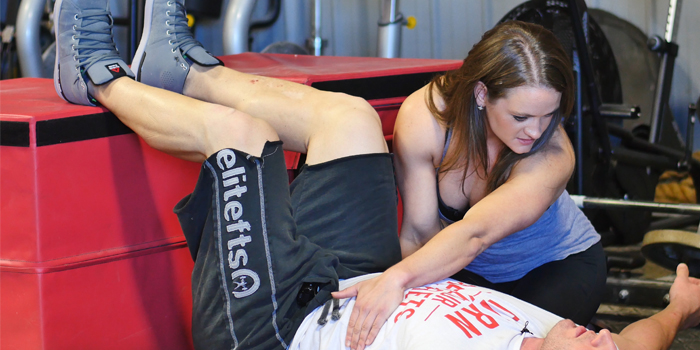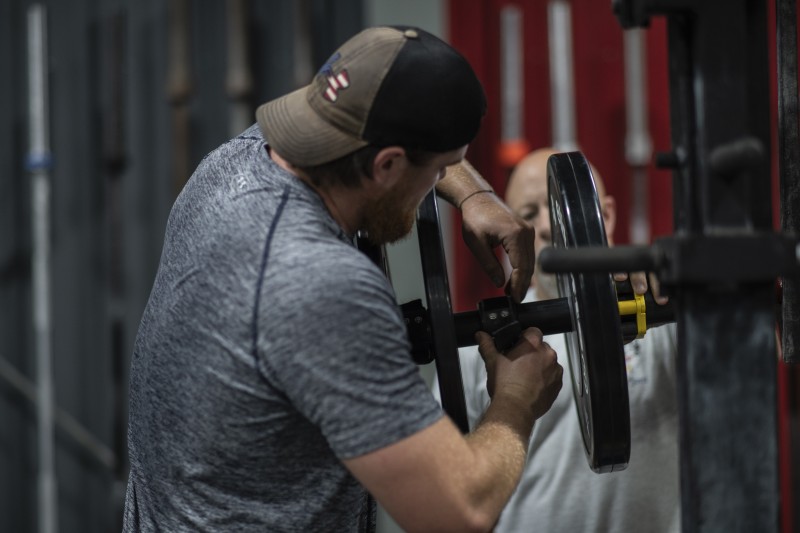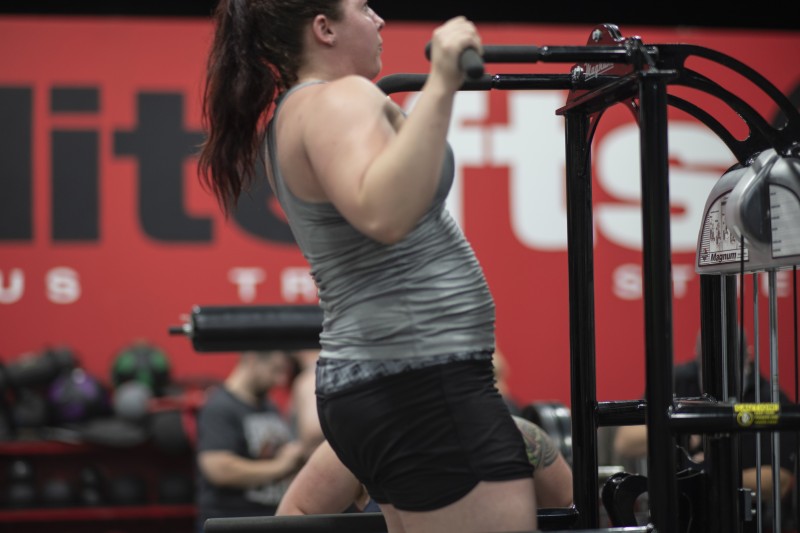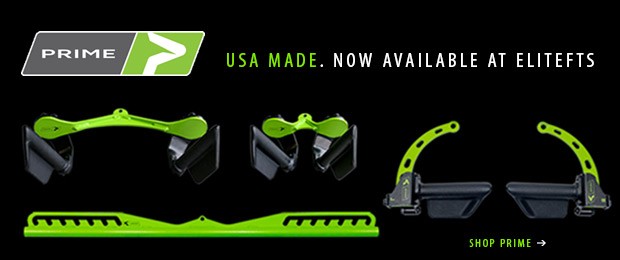
There’s a common theme in some of the strongest lifters we’re seeing today with regard to how they train. It’s also something that Dave has spoken about repeatedly in the past that tends to get lost as soon as we feel the need to do movements we’re already good at, when we want to feel “capable”, or when we need some social media love, versus doing the things that we really struggle with. The best lifters today do the same thing that the best lifters over past decades have done: they train patterns and positions with intent. I’m a huge believer that incorporating actual patterns and positions through your accessory work, in addition to main work, is one of the most overlooked ways to gain stability (which will do crazy things for your main movement) and keep healthy through training.
I’m as guilty as anyone when it comes to moving a weight that makes me “feel good” about training, versus doing a movement that requires less weight on the bar because it exposes weakness. But with regard to both getting stronger and getting healthier coming back from injury, the idea of training with intent, and training smart, purposeful movements is the most underused trick in the book. There’s a reason most PT’s that work with athletes acknowledge two things frequently:
- The role of the nervous system in consistency of movement, recovery, and readiness.
- The role of stability (think: ribcage, “core”, and concepts including rooting to the floor) and proprioception. What you feel or sense, what cues you give yourself – that is all proprioceptive information that matters. You “bracing” into your belt is proprioceptive input just as much as it is improved mechanical stability.
These two things together heavily influence main movements, and I’d argue that they even influence our accessory movements or athletic training for youth. Work done in the weight room for both pure iron sports as well as for athletic development is performed with a purpose: to get stronger.

I’d argue that accessory movements are one of the biggest-bang-for-your-buck places to reverse the influence and let those accessories improve both of the above-mentioned concepts. This is simply because they have the purpose of improving whatever breaks down in main movements – training 101. Also, ignoring this is a pretty solid “how-to-skimp-yourself-out-of-progress-and-get-hurt” 101.
We have gotten better at acknowledging the value of things like core work and unilateral work. I’ve seen more raw lifters actually doing more accessory work, more youth athletes in the gym, and less women using a cue “just because they were told to do so” even if it hurts, but it’s not good enough to stop there. The addition of unilateral work is the “getting seven hours of sleep consistently” kind of good – we all strive for it, and it’s a good thing to do. The addition of unilateral work with purposeful movement and intent is like sleeping for nine hours with blackout curtains, zero sound, and one of those weird meditative apps that people seem to love. It might look a little odd to people around you if they don’t get it, and it takes a little extra effort to get down, but you know that you’ll be far better prepared and physically ready for what’s ahead of you. It’s what you do consistently if you want to be at your best on game day.
The best way to build off this is by looking at what you see in the main sets that you’re probably already videoing, and compare that to what you feel from a proprioceptive standpoint. You need to look at how these two align (or don’t align), and you need a good training partner or coach who actually takes the time to look at your sets with an appropriate level of scrutiny.
There are a few things you may sense, either while you’re lifting, or after:
- where you feel a majority of the work or drive coming from
- where you feel that fatigue accumulated after the set
- where in the motion you can almost visualize your bar path changing, which you can compare to video
- where you “leak” stability to get through the lift – this is likely your weakest point, and where you’ll lose position
- where your stability is coming from (stop just thinking about your brace – think about where it’s REALLY coming from), either at your un-rack for squat or bench, mid-rep, or off the floor for your deadlift
- a loss of your base stability (maybe it’s a shoulder rolling up on bench)
- a loss of symmetry – we love the idea of symmetry, and as much as I think we over-glamorize it at times, you certainly don’t want to have rep after rep drive into poor mechanics
Pick two or three of these things (max) and make them the focus of your accessory work. The biggest things I often see butchered are as follows:
- If you use a pit shark, goblet squat, or any variation of squat movement for “hypertrophy” purposes, and your problem in your main squat is poor stability through the transition of concentric through eccentric, then you need to perform those movements with an emphasis on keeping stability at the bottom.
- If you subjectively feel a massive low back pump after things like RDLs, then you need to intentionally load into your glutes and hamstrings, root yourself to the floor, and keep your low abs “on.” You’ll probably need a mirror to make sure that you’re actually hinging properly.
- If you note a consistent loss of symmetry in a squat or pull, and perform single-leg work in the same direction of that asymmetry (again, one of the biggest errors I see people make) simply because you haven’t thought about it. Use a mirror – control position. You can make this brutally hard by picking your poison using volume, tempo, or weight, and still get massive improvements even if it’s “less” than if you permit yourself to fall into the same loss of control in your main movement.
- If your shoulders roll up as you press off your chest during your bench, and you’re performing high-rep sets of triceps push-downs with your shoulders rolled forward (which, unless you’ve had someone point this out to you, I can almost guarantee that you are), you MIGHT want to keep your shoulders in a stable position while you’re hitting your hypertrophy work. Your mid-back will be on FIRE, especially if you think about stabilizing your ribcage.
- If you goblet squat with the weight held braced at your sternum and neck, touching and letting your upper back round, then you’ll get a pump but no “good” trunk stability.
At some point, you need to focus on what’s actually going to make you better. We focus on “piddly” rehab movements as warmups, but at some point, you need a way to utilize them to make you stronger, address your weaknesses, and let the strength from these movements improve both nervous system coordination/recovery/readiness, and positional/proprioceptive control. Arbitrarily doing 3x8-10 single-leg deadlifts as a “warmup” with poor control and poor incorporation of YOUR specific weaknesses does little for your actual improvement. Instead, take that movement, tailor it to your improvement opportunities (e.g. single-leg stability, appropriate core stability without over-stabilizing, sensing hamstrings and glutes), and make it progressive (that’s code for: permission to add weight). This will make you STRONGER, actually bring up your mini-max, and give you a healthier nervous system.
This is not to say that accessory work should be fluffy – au contraire. I’m a huge fan of hard, heavy accessories, but they need to address their purpose. Some people need improved proprioception of certain muscles working with less irradiation and overflow, while others need to be able to attain the concept of irradiation and still be able to move correctly. There has to be a purpose, and for most people, it’s a loss of position, strength, or stability (sometimes via over-stabilizing). Loading up a movement for the sake of throwing more weight into the mix might produce some metabolic fatigue and ego-stroking, but if you’ve performed the movement with exceptionally poor technical proficiency, you’ve lost the purpose anyway. If your goal is to feel some weight, fantastic – there are plenty of movements that have “cheater rep” permissiveness if that feeds their purpose. You will get full body shakes from appropriate, controlled movement, with incredible stability and strength gains, if you incorporate concepts appropriately.











